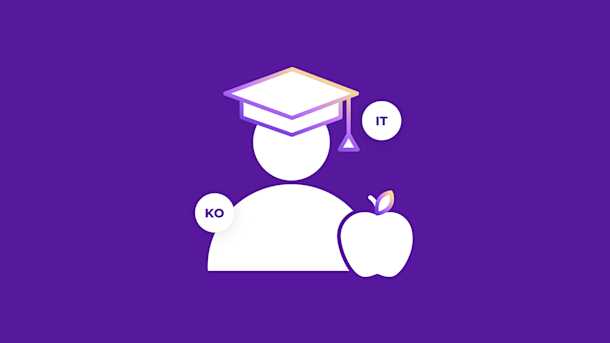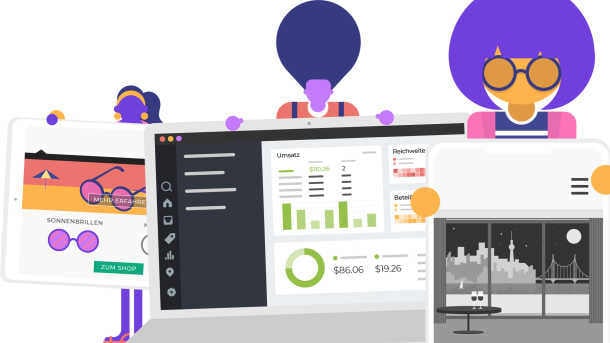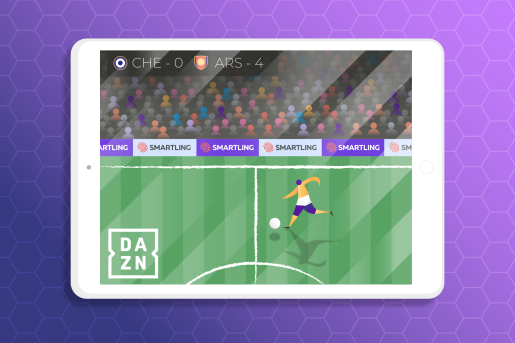The learning population in school districts is increasingly diverse today. About 68 million Americans speak a language besides English at home, and 29.6 million of these people have limited English proficiency (LEP). Students in these families may face learning barriers that native-speaking students do not. Because of this, it’s essential to communicate with students and parents alike in a language they understand.
Education translation services play a vital role in ensuring that students from diverse linguistic backgrounds have equal access to educational resources and opportunities. These services can significantly enhance students’ learning experience by providing translations of critical documents, educational materials, and communications quickly and accurately.
Below, we will discuss how education translation services work, how you can ensure consistent translation quality across large volumes of educational content, and how to choose the best translation service for your unique needs.
Types of education translation services
Education translation and interpretation services are indispensable for effective communication with students and their families. Employing skilled translation experts and linguists is also crucial for delivering instructions to students and engaging with families who have LEP.
Several types of education translation services cater to institutions’ and learners’ diverse translation needs. These include:
- Document translation: Translating educational documents like parent letters, enrollment forms, report cards, guides, surveys, educational brochures, marketing materials, and other educational materials ensures that students and parents can access the information they need.
- Academic translation: It’s important to provide accessible educational content to students with different linguistic backgrounds. This content includes important student documentation like individualized education plans and curriculum materials, such as activities, lessons, handbooks, courses, resources, research papers, as well as other K–12 and higher education content. It’s also important to localize e-learning content like video lectures, interactive modules, and quizzes for various languages and cultural contexts.
- Website translation: A multilingual website helps educational institutions reach a broader audience. With website localization—which includes adapting visual elements like images, videos, and other multimedia content—institutions can make important information accessible to students and parents.
- Language interpretation: Interpretation involves providing real-time translation services and professional interpreters for in-person instructions or phone conversations between parents and teachers. This process allows for effective communication and greater parental involvement in students’ education.
How does education translation quality impact learning outcomes?
According to statistics from the U.S. Department of Education, 5.3 million English language learners were enrolled in public schools as of 2021. Additionally, the number of international students in the US increased by 12% in the 2022–2023 academic year compared to the previous year. Due to the rising number of students with LEP, it’s challenging to ensure that all students have access to high-quality education in their native language.
Education translation has a significant impact on learning outcomes for these students. Receiving vital information in a language they do not understand can severely hinder students’ ability to learn and succeed academically.
Research has found that students with LEP who receive instruction in their preferred language demonstrate better learning outcomes than those who do not. For example, a large-scale survey of English learning outcomes in rural India found that providing instruction in students' native languages had a positive impact on their learning proficiency.
Unfortunately, many school districts rely on slow, manual translation processes that can leave students and families without important information for days or even weeks. Using professional services and language translation allows for high-quality translations that support students and families alike in far less time than manual processes.
Professional translators have the subject matter expertise to accurately convey complex educational content across multiple languages while keeping cultural nuances in mind. This is especially important for translating key documents like textbooks, study materials, exams, and school policies.
Education translation challenges
Education translation can be a costly affair, and school districts often struggle with the sheer volume of educational content they need to translate. Initially, translation needs may seem manageable, but they can quickly become overwhelming (and over budget) as more schools join the translation process.
Another significant challenge lies in finding a cost-efficient translation process to use across multiple translation projects. For instance, you shouldn’t have to pay for pre-translated content. Instead, you should manage key terms and create comprehensive glossaries that are specific to your domain for increased consistency across translation projects. However, this can be a time-consuming task for busy educational professionals.
How to maintain high education translation quality
Maintaining consistently high-quality translations across large volumes of content is crucial for the education sector, where accuracy and clarity directly impact learning outcomes.
Here are some actionable strategies you can use to achieve consistent translation quality:
- Find a comprehensive translation management system that integrates human translation, machine translation, and post-editing capabilities.
- Use AI-powered human translation services that leverage machine learning for a higher-quality, more efficient translation process.
- Implement automated translation workflows that simplify translation project management, reduce manual effort, and ensure seamless collaboration between linguists and project managers.

Smartling’s automated translation workflows (Source)
- Work with native speakers who have industry expertise to ensure that education translations are accurate and maintain cultural nuances.
- Deploy automated quality checks to ensure that all translations meet the highest quality and accuracy standards. For example, with Smartling’s Linguistic Quality Assurance framework, you can perform quality assurance directly within Smartling’s platform and review metrics on a comprehensive analytics dashboard.
- Opt for tools that offer translation memory to store all your previously translated content so you only pay once for each translation string. Over time, this can significantly reduce costs.
 Smartling’s Linguistic Quality Assurance framework (Source)
Smartling’s Linguistic Quality Assurance framework (Source)
Choosing an education translation service
For scalable education translation, it’s best to choose a language services provider that helps you balance content volume, quality, and costs efficiently. A translation management system (TMS) is an effective solution for balancing these concerns.
When choosing a provider, it’s also important to consider what translation elements will be relevant in the coming years and how they fit into your business goals.
To help you make the right decision, here’s a list of must-haves for an education translation provider:
Automated translation workflows
Look for services that offer automated workflows to simplify the translation process, reduce manual intervention, and provide easy collaboration between stakeholders. You should also make sure that you can customize workflows for your specific needs.
For example, educational institutes often need to translate several different types of content that might require both internal and external reviews. Ensure that the provider you choose can handle all stages of your translation workflows.
Seamless integrations
Your translation provider should be able to handle multiple file types, such as PDFs, PPTs, and Word documents. You should also consider services that offer plug-in support or integrations with popular content management systems and learning management systems to simplify website and e-learning translations.
Efficient quality assurance
Especially for high volumes of education translation, maintaining high quality is a long-standing challenge. Opt for services that feature a built-in quality assurance process, including human review and editing, to ensure higher-quality translations.
Modern TMSs leverage translation memory to reuse previous translations, which results in higher-quality, more consistent translations. Most also allow you to create native linguistic assets like glossaries to maintain brand alignment across languages.
The best platforms provide automated quality assurance checks as well to help translators fix issues like typos, formatting problems, incorrect markup, and terminology inconsistencies before they finalize translations.
Robust analytics
Schools and educational institutes often need to make data-driven and budget-conscious decisions. A good translation provider will offer real-time reporting and visibility, which helps you easily monitor costs and quality. Key stakeholders like school board members can also download this data to evaluate your translation initiatives’ performance.
AI-assisted translation capabilities
AI is revolutionizing the localization industry with machine learning and natural language processing. This modern technology can deliver high-quality education translations at scale—especially with human oversight. AI can also create automated glossaries based on your previous translations to maintain consistency across all languages and content assets.
If you need more help with choosing an education translation service, take a look at our translation buyer’s guide for school districts.
How Fresno Unified School District revolutionized education translation
Fresno Unified School District, the third largest school district in California, faced a dilemma in providing timely and consistent translations of critical documents like individualized education plans (IEPs) and enrollment materials for its diverse student population of over 73,000 across 100 schools.
To address this challenge, the district created a centralized translation and interpretation services team that implemented Smartling's TMS. This platform allowed the team to improve consistency with style guides and translation memory, increase translator efficiency with computer-aided tools, and more effectively communicate translation volume and needs to district leadership.
As a result, the team is on track to meet its ambitious goals of 30-day turnarounds for IEPs and 72-hour turnarounds for other materials, all while inspiring other districts to adopt similar technology-driven translation processes.
How Smartling makes education translation easier
Smartling’s TMS is the perfect partner for your education translation needs. Its advanced LanguageAI technology, combined with human translators, can accurately translate complex educational content, including technical terms and nuanced concepts, to meet diverse student populations’ specific needs.
This synergy is particularly impactful in the education sector, where accuracy directly correlates with students’ learning outcomes.
Beyond this, Smartling's AI-Powered Human Translation solution leverages AI, machine translation, and human expertise to deliver remarkable quality scores of 98+, reduce per-word costs by up to 50%, and cut delivery time in half compared to traditional human translation.
Smartling easily integrates with content management systems to allow educational institutions to maintain consistency across a large volume of content. Additionally, Smartling’s Global Delivery Network provides a robust infrastructure for content delivery and management. This translation proxy enables you to efficiently manage and distribute your translated content across multiple regions and languages so students always have access to high-quality educational materials, regardless of their location.
Smartling's translation services also cater to the education sector’s unique needs with specialized education translation expertise. This includes the ability to handle complex formats such as multimedia, videos, and interactive content.
Elevate your education translation with Smartling—book a meeting today.






